Gardening Highlights from 2021
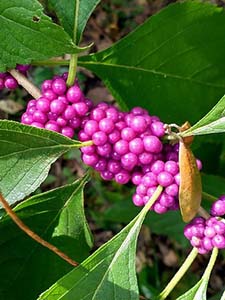
2021 was a colorful year and our social media highlights captured the variety well. Below is our countdown of the top 10 trends from the year’s posts.
10. Beautyberry
Who doesn’t love a flashy, colorful native? Beautyberry captured the hearts of Florida gardeners again this October. Whether you know it well or only noticed it for the first time this year, that striking purple color is hard to miss. And while beautyberry received the most publicity, we celebrated a number of natives this year. Swamp sunflowers, seven different pines, muhly grass, milkweed, elderberry, and more made the list this year. You can learn about these and other native plants on the Gardening Solutions Florida native plants list.
9. Weed ID Resources
Unsurprisingly, Florida’s charming but often “out of place” species were undeterred by social distancing guidelines. They sprung up fast and thick, as usual. Also unsurprisingly, weed-management resources were popular with Florida gardeners. New weed identification videos from UF/IFAS’ Dr. Chris Marble were shared again and again. You can find all 20 of these helpful videos on Gardening Solutions’ Florida Weed ID page.
8. Eastern Lubber Grasshopper
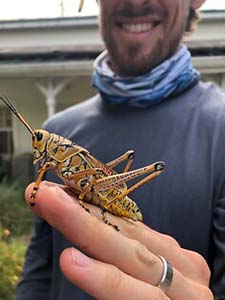
The eastern lubber is one of the most distinctive (and destructive) grasshopper species found in the southeastern United States. This picture of Dr. Adam Dale and his arthropod friend has topped the charts two years in a row! Eastern lubbers are almost bullet-proof (and shovel-proof); we’re sure we’ll be helping gardeners manage them each spring for years to come. If you’d like to learn more about this pest we have much more information on the eastern lubber grasshopper from Gardening Solutions.
7. Rain Gardens
A rain garden is basically a low section of the landscape planted with native plants that like to get their “feet” wet. What makes rain gardens charming is the sense of motion they add to the landscape, even in dry weather. Flowering plants that prefer rain garden plantings are often unique, too. Blue flag iris, goldenrod, swamp sunflower, spider lily, and milkweed all thrive in seasonally wet areas. The rainy season was short this year, but rain gardens are beautiful year-round. If your landscape has a natural flow or low, soggy places, consider adding a rain garden.
6. Roselle
Hibiscus sabdariffa has it all; it’s colorful, vigorous, flowering, edible, and downright easy to plant year after year from saved seed. We chose it as November’s Plant of the Month and encouraged gardeners to consider “Florida cranberry” for their Thanksgiving table. Roselle also makes tasty jam and adds “zing” to herbal tea mixtures. If this is the first you’re hearing about it, we suggest picking up some seed and planting roselle this April. You can also check with the local U-picks come fall and enjoy the harvest. We’re running out of room to sing its praises, but you can learn more about roselle on Gardening Solutions.
5. Palm Nutrition
Fifth on our list of 2021’s trending topics was palm nutrition and this one caught us by surprise. It shouldn’t have — we gardeners are serious about nutrients. In Florida, magnesium deficiencies in palms are a fact of life. We have another hard truth for you, too: Epsom salts are not the answer. We know everyone loves a good DIY solution, but soil pH is complicated. All elements are toxic if applied in the wrong dose and salts are particularly tricky. And, as always, the label is the law. Please, drop the salts and slowly back away. Give us a call at your county Extension office. We’re here to help.
4. Poisonous Plants
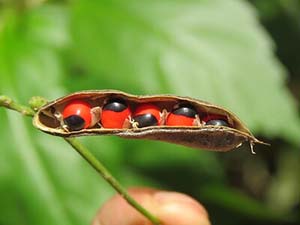
Poisonous plants topped the charts long before spooky season arrived. We think it was the colorful seeds of the rosary pea that made May’s post so popular. Quite a few plants in our gardens have the potential to make us sick. Botanist Marc Frank gave us a list of six common and widespread plants in Florida that can cause severe symptoms. You can learn more about these in the full article “Poisonous plants in your Florida garden: Six deadly species to know” from the Florida Museum.
3. Fall Herbs
They grow quickly, smell fabulous, and require so little space. It’s no wonder that herbs grabbed the #3 spot on our list. It was likely our post about fall herbs that captured gardeners’ imaginations, but UF/IFAS has many resources for herb gardens. We have infographics about Winter Herbs and Spring Herbs (both pdfs), and articles on Gardening Solutions like “Five Herbs for December,” “Preserving Herbs and Spices,” and even “Homegrown Herbal Teas,” as well as 20 different pages on individual flavor-rich species. We hope this list adds some flavor to your 2022.
2. Pineapple
It isn’t native, but pineapple is a plant that was made for Florida. It loves the heat and the moisture. It’s sweet and tropical. It’s good in a drink on a hot day and upside-down on a cake. And it couldn’t be easier to turn trash to treasure if you have a leftover pineapple top. We published our home-grown pineapple piece in April to explain the intricacies of this edible bromeliad. Yes, it really is as simple as rooting a leftover pineapple top but you could spend a lifetime learning about pineapples. In a way, this tropical fruit is a perfect example of what we love best about gardening — you can learn all you need to know in a day and still spend a lifetime learning more.
1. Edibles Infographics (2021 editions)
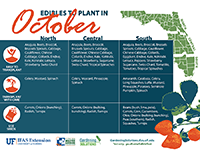
Of course, the star of any top 10 list from the MGV Program is the “Edibles to Plant” infographic. Six of the most wide-reaching posts for the year were on these monthly charts. In 2021 we published an expanded set of these popular graphics. The newest editions include dozens of new crops and updated planting dates, too. We also created an accessible text-only page for gardeners making use of assistive technology. Based on feedback we received throughout the year we made a few more changes along the way. Now the most up-to-date versions are available on Gardening Solutions.
Thanks for taking a look back in time at this colorful year with us. As always, the Florida Master Gardener Volunteer Program is here to help. Give our volunteers a call at your county Extension office. Happy gardening!
